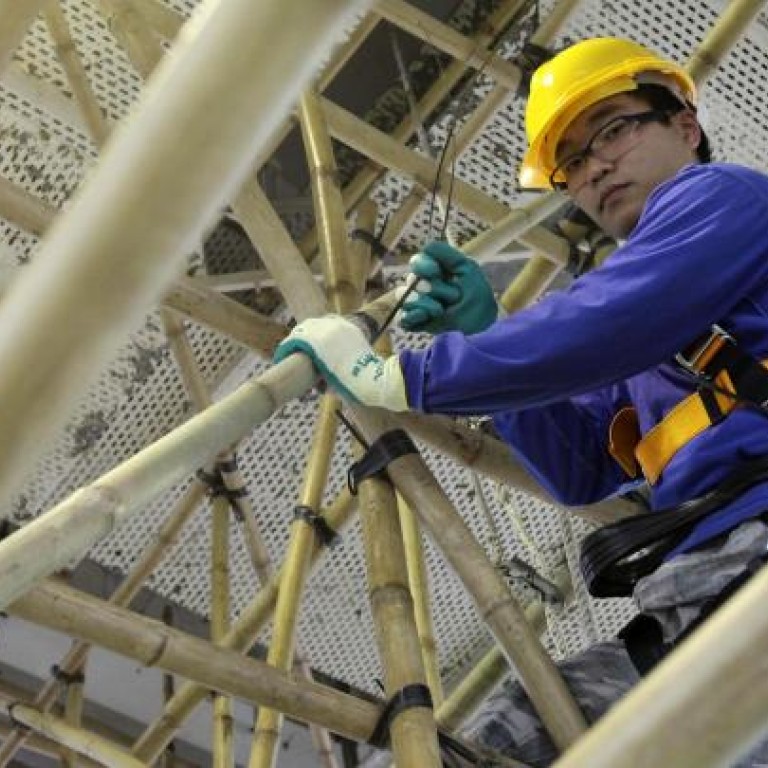
Rising number of projects and labour shortage to keep construction costs high
Increase in development and a persistent shortage of skilled labour will push costs higher for the building industry in the next few years
Construction costs in Hong Kong are expected to rise sharply over the next two to three years because of an increase in infrastructure and residential developments and a shortage of labour.
Prices are already on the march. The Tender Price Index compiled by surveying firm Langdon & Seah shows that construction tender prices grew 9.5 per last year, up from the 9.1 per cent growth in 2011.
In the first quarter of this year, the index has already risen a further 2.3 per cent, and is expected rise a further 2.3 per cent this quarter.
"Construction costs will rise sharply in the coming two to three years as there will be more infrastructure construction under way, which will bid up the tender price of constructors and price of labour," said Antony Man Chi-chuen, immediate past chairman of the quantity surveying division at the Hong Kong Institute of Surveyors (HKIS).
In addition to the increase in infrastructure projects in the pipeline, including facilities at West Kowloon Cultural District and the third runway at the airport, the government will also be building more public and Home Ownership Scheme (HOS) housing. The increase in land supply in recent years would also see construction of private housing increase, Man said.
Man said construction costs began to rise sharply in the middle of last year. "The tender cost of each project has risen by 8 to 10 per cent," he said. "This was because there have been more projects to bid for in recent years, which gave contractors more choices, enabling them to hold out for higher prices."
Data from the institute shows that work floor area under construction during the first three quarters of last year was 25 per cent higher than that for the whole of 2011.
Higher wages, a result of the city's building labour shortage, are another factor driving construction costs higher.
"It's hard to find workers," said Vincent Ho Kui-yip, immediate past chairman of the building surveying division at HKIS.
"The Construction Industry Council and the government have encouraged young people to join the industry and provide training courses, but there are still too few people willing to join.
"At the same time, many skilled workers are ageing or approaching retirement. These factors are contributing to longer construction schedules, putting costs under greater pressure."
The number of skilled labourers in the industry remained unchanged at 107,000 last year, according to Langdon & Seah.
The surveying firm expects there will be more private sector construction projects as residential developments approved under the old planning rules approach their deadlines for implementation. The workload this year for this sector is expected to be higher than last year.
Wheelock Properties chairman Stewart Leung Chi-kin foresaw no relief to high construction costs.
"The government has increased land supply but construction costs will not fall. Also, the government will build more public and HOS housing which means construction costs may rise further," he said.
Offering some consolation to homebuyers, Antony Man said rising construction costs should have a limited impact on property prices compared with the impact of downturns in the global economy and overall market sentiment.
But he said the construction industry needed to tackle labour shortages.
"We could examine the greater use of machinery to replace manpower in some building procedures and adopt wider use of precast construction methods," he said.
"The industry is also improving the working environment to lure people to join the construction sector."

